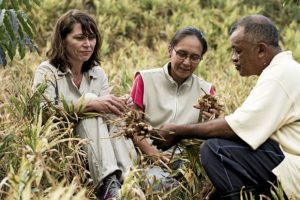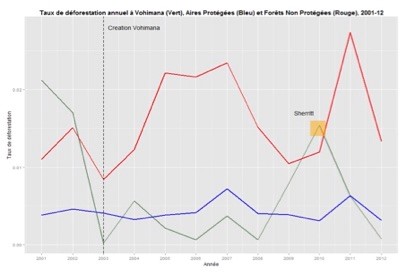MADAGASCAR – VOHIMANA, BIODIVERSITY HOTSPOT 13 December 2016
Save the world’s hot spot for endemic frogs, lemurs, and more
Madagascar is known for its impressive number and incredible diversity of species that are only found on the island. The Vohimana forest is a little portion of the humid tropical forest to the East of Madagascar. Situated between the coast and the mountain, this area is the epitome of diversity for amphibian species with twice as many species found in only 6 km2 than in all the 10.000.000 km2 of Europe.
At present, not much of the forest is left, and what is left is under constant pressure from wood-trafficking and also by slash-and-burn agriculture which is, unfortunately, the easiest option of the populations located to the East of the large island.

After a Swiss biologist raised the alarm in 2000, Olivier decided to act in order to save this unique site. Given the level of destruction at the time, it was estimated that the forest could have completely disappeared in only two years.
The NGO “L’Homme et l’Environnement” (Man and the Environment) was founded by Olivier, with the initial goal of rescuing this forest. Since then, supporting the local people and ensuring they have access to basic social services and economic opportunities non-destructive of the local environment has been crucial.
The richness of the local environment should allow this to be possible, even if the persistence of extreme poverty makes it a complex challenge. The production of essential oils started to be developed at the site. The NGO managed to get Chanel on board to support the improvement of the living conditions of these populations. The brand was also able to find interesting molecules present in the plants found in this area.
Back then, only 30% of the local children had access to schooling. Thanks to the efforts of L’Homme et l’Environnement, the vast majority of children are now in school. A health centre has been built on the site, offering notably, and for the first time in this area, women acceptable conditions in which to give birth.
 Studies conducted by CIRAD (International Research Centre) have shown that, thanks to the actions of L’Homme et l’Environnement, deforestation has been lessened in Vohimana when compared with other forest areas in Madagascar and even with national parks.
Studies conducted by CIRAD (International Research Centre) have shown that, thanks to the actions of L’Homme et l’Environnement, deforestation has been lessened in Vohimana when compared with other forest areas in Madagascar and even with national parks.
Nevertheless, this country, one of the poorest in the world, still has great challenges ahead of it, especially as it suffers near chronic political and institutional instability. The work done in Vohimana over the last fifteen years or more needs to be continued and even reinforced, in particular in order to help local populations give value to the incredible plants present on their land.
We need to find ways in which to continue supporting the conservation of this site. The production of fresh ginger from Vohimana that was developed by Chanel should help to expand markets, including that of the perfume industry given its magical scent. Aphloia theiformis is another plant native to Vohimana that has been studied for over ten years. Now present as one of the key ingredients in some of Yves Rocher’s products, more men and women in need of this plant should now be able to access it easily.
One of the project of Net Positive Impact is to implement a system of lemurs monitoring to know exactly how many lemurs and f which species, in order to better protect them. A species protection, for lemurs and other flora and fauna species is required to prevent poaching and illegal slash and burn practices, this is why Net Positive Impact is seeking to implement and to equip on the long-term forest patrols teams.
